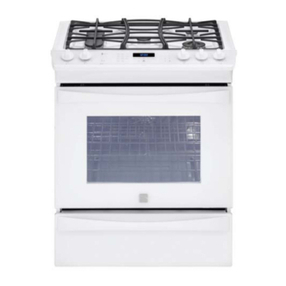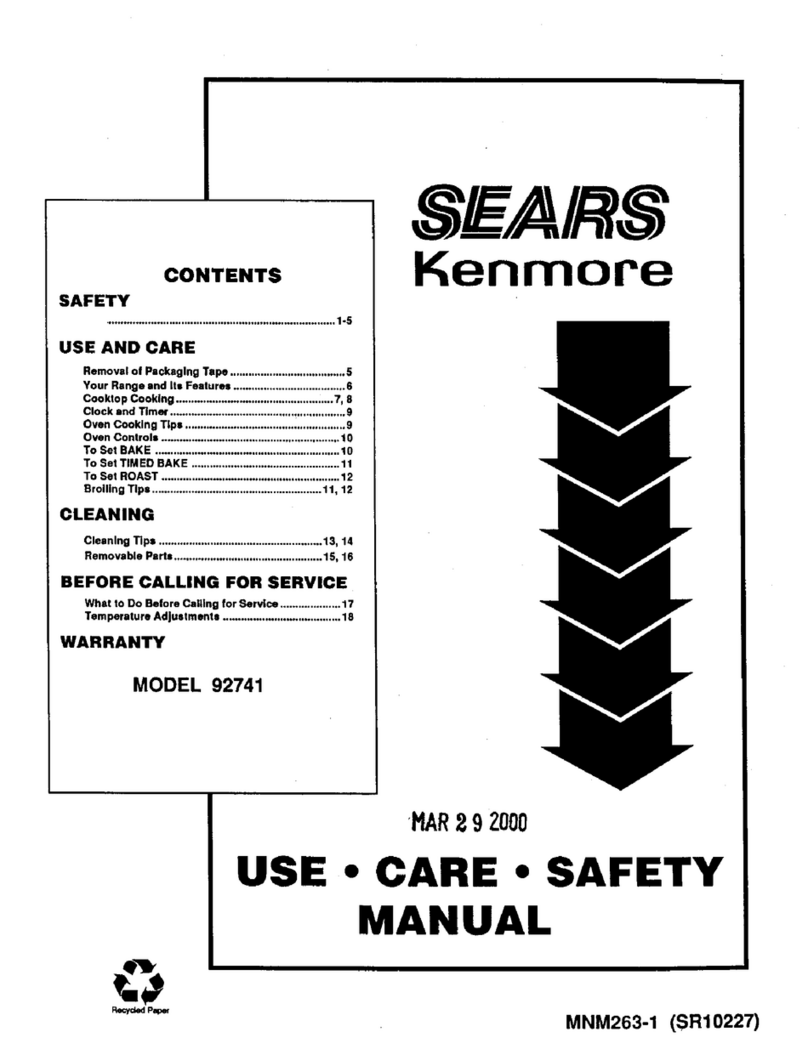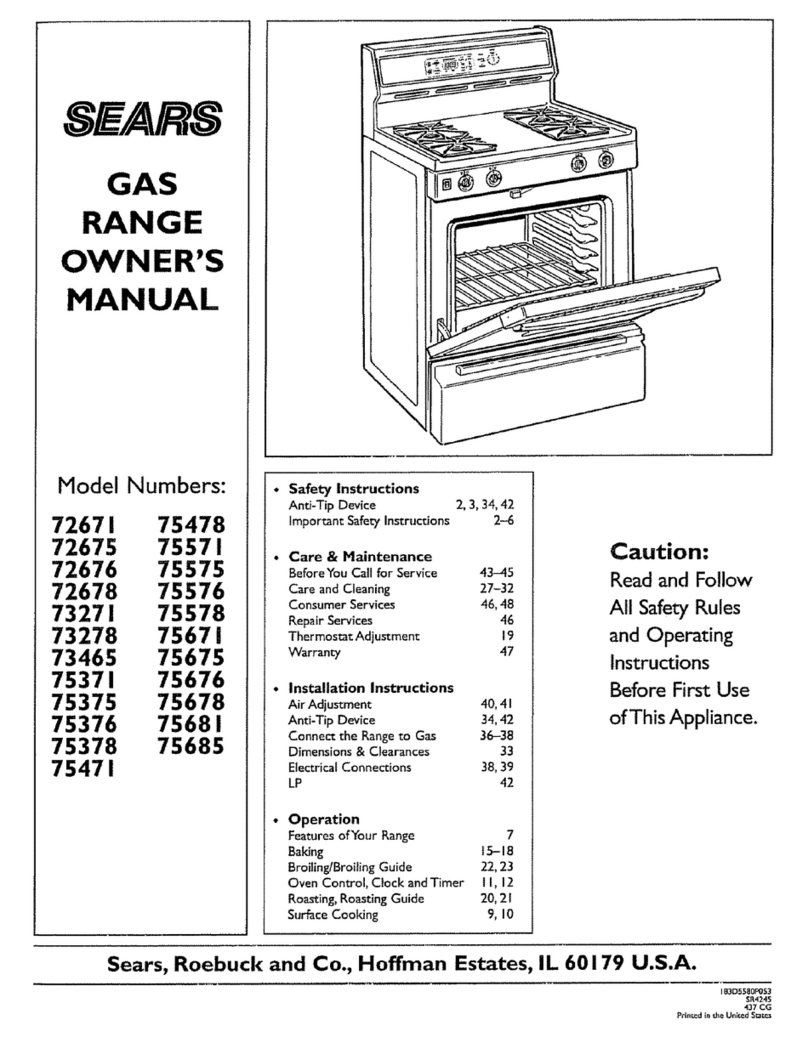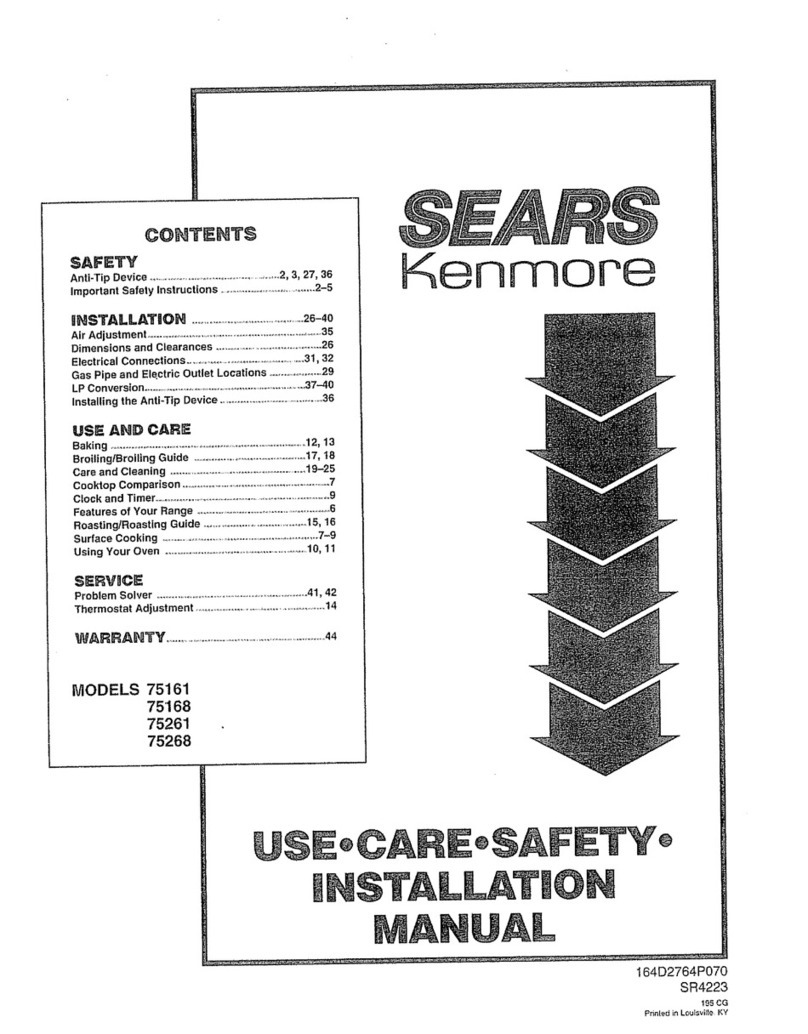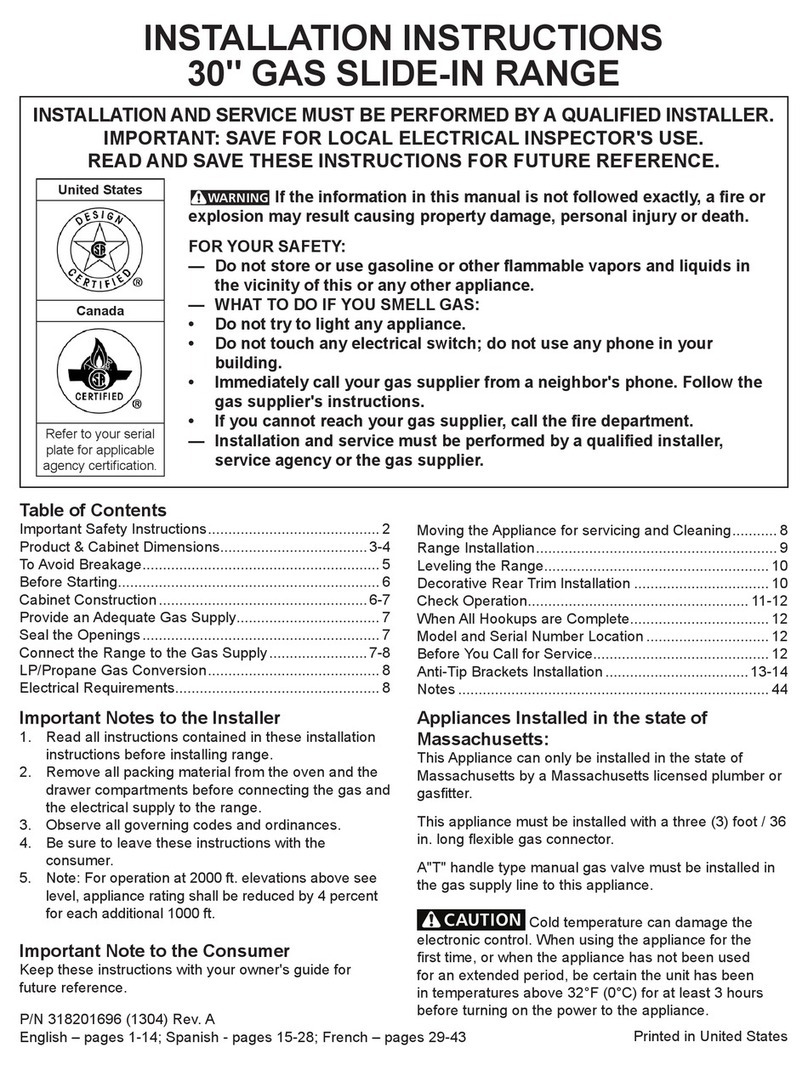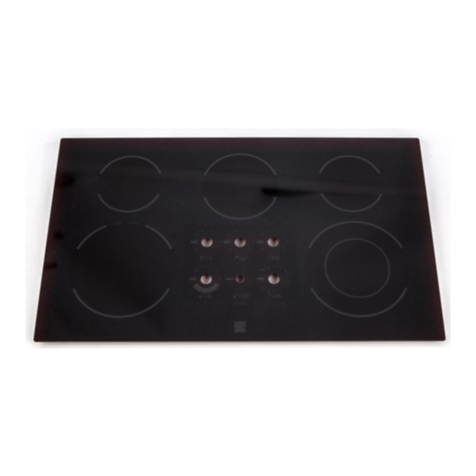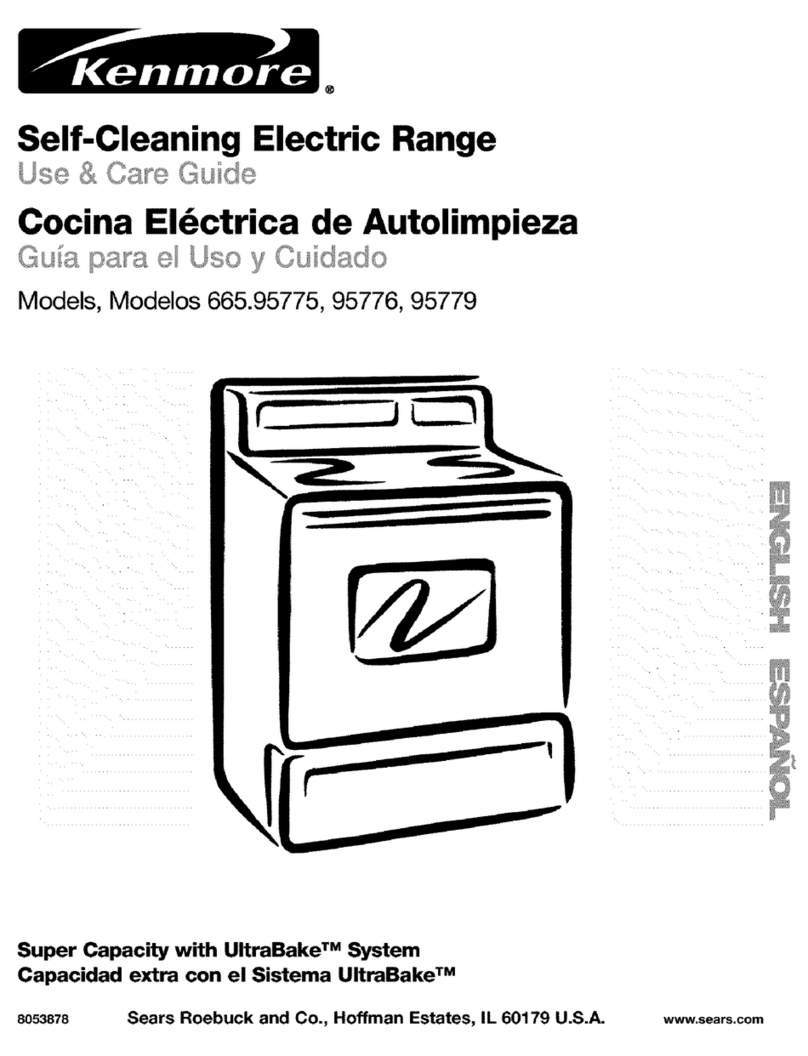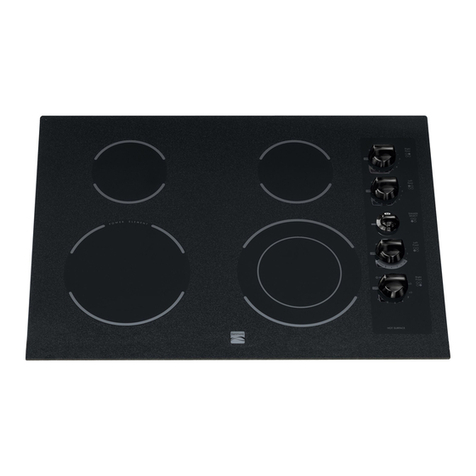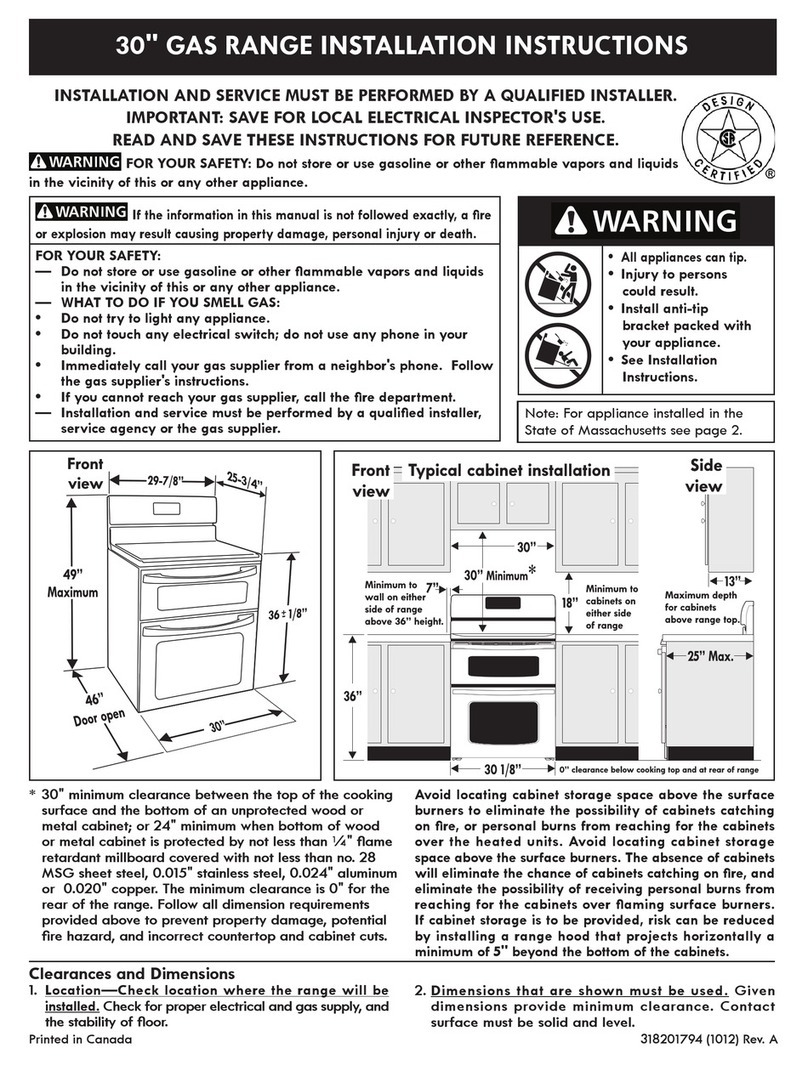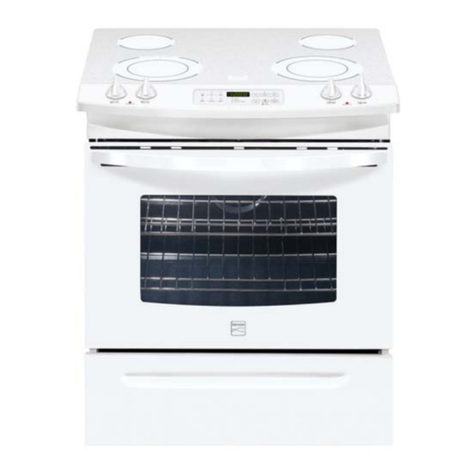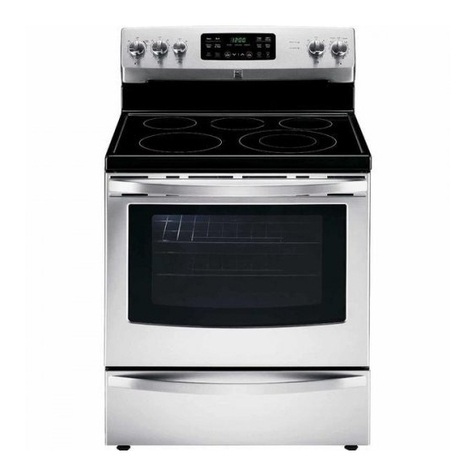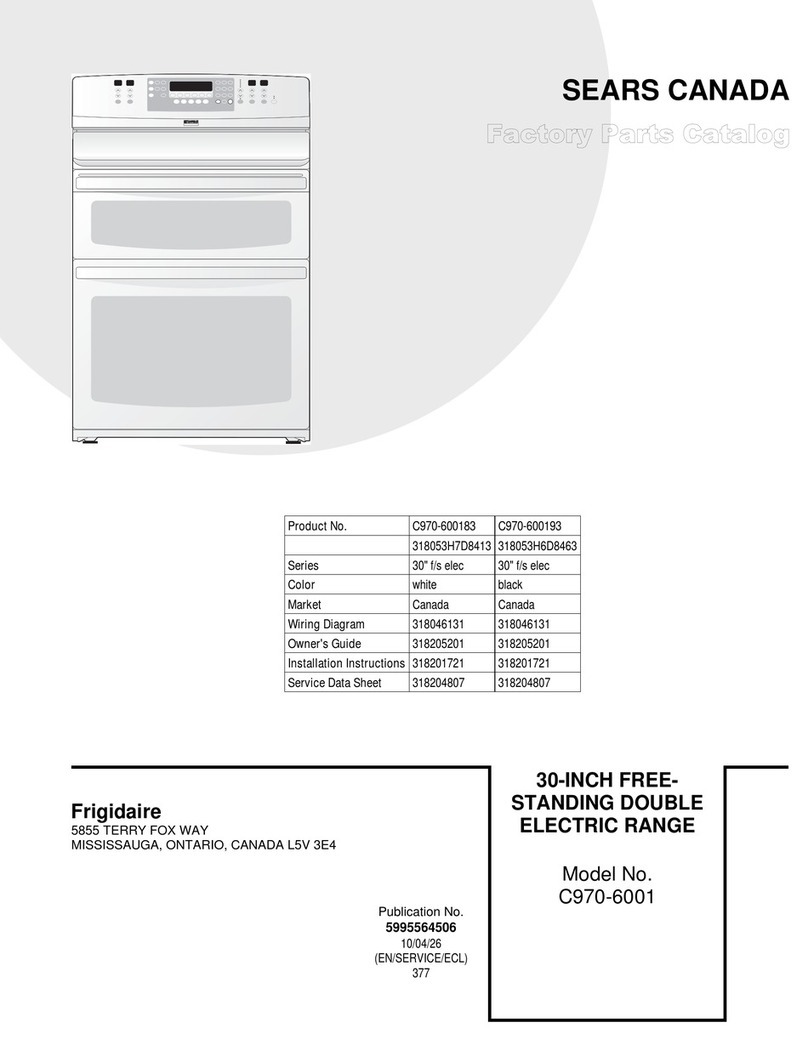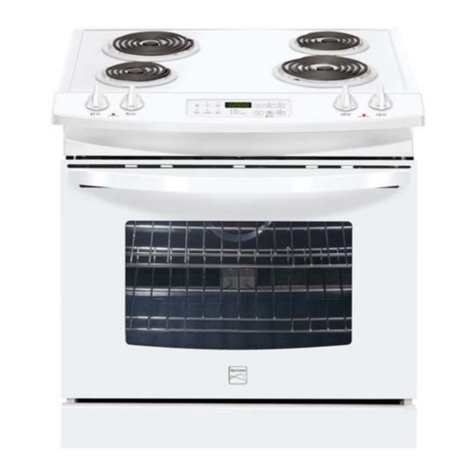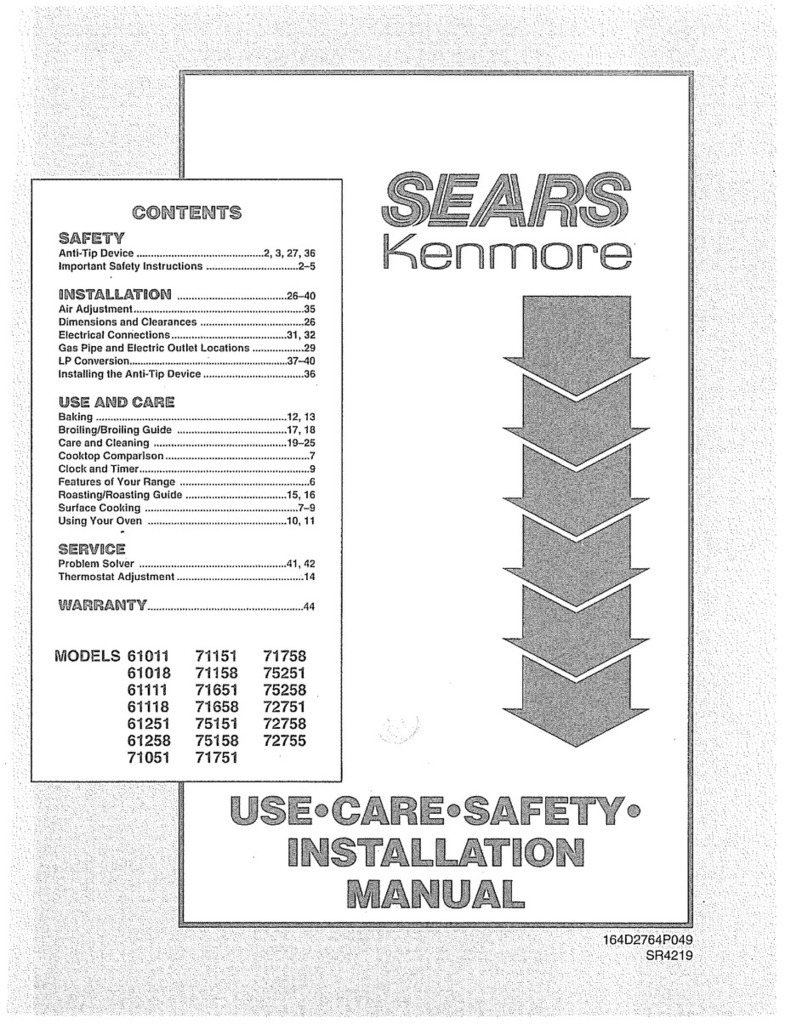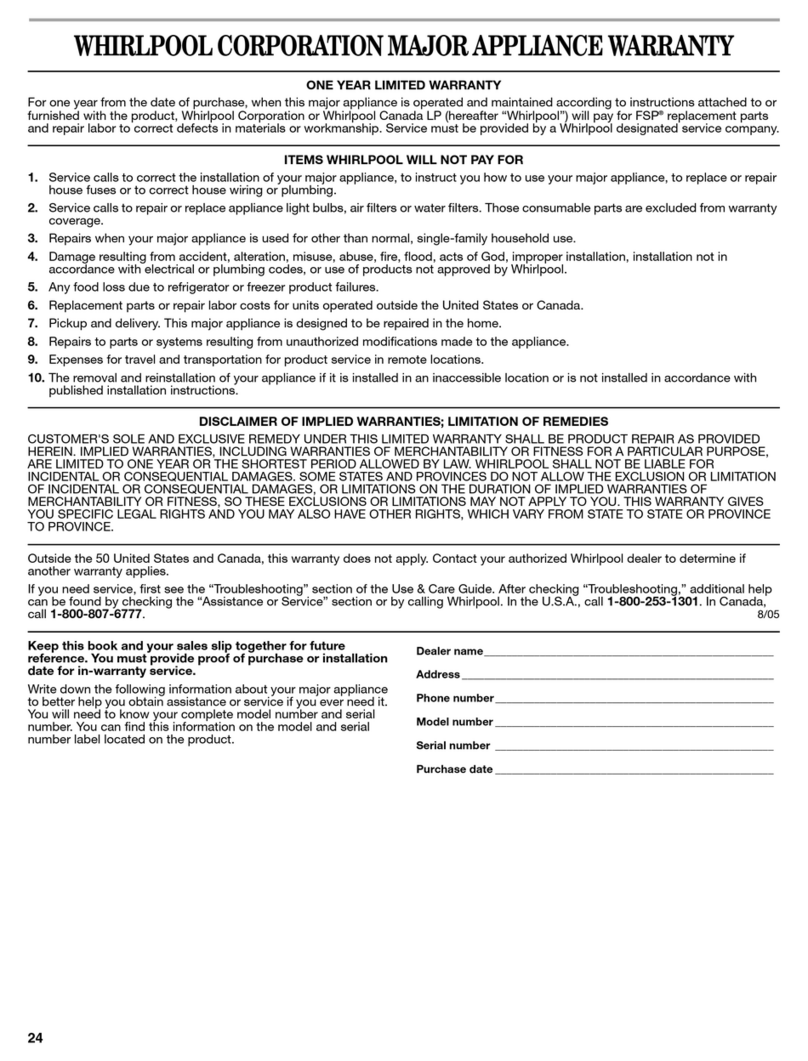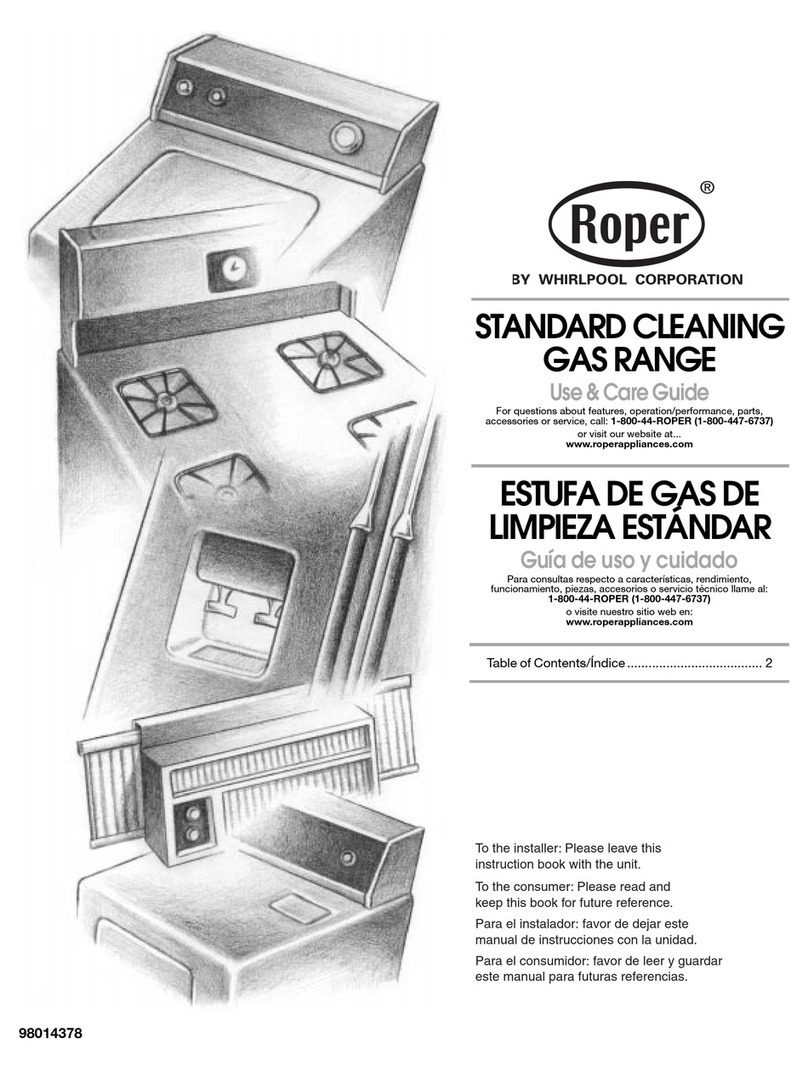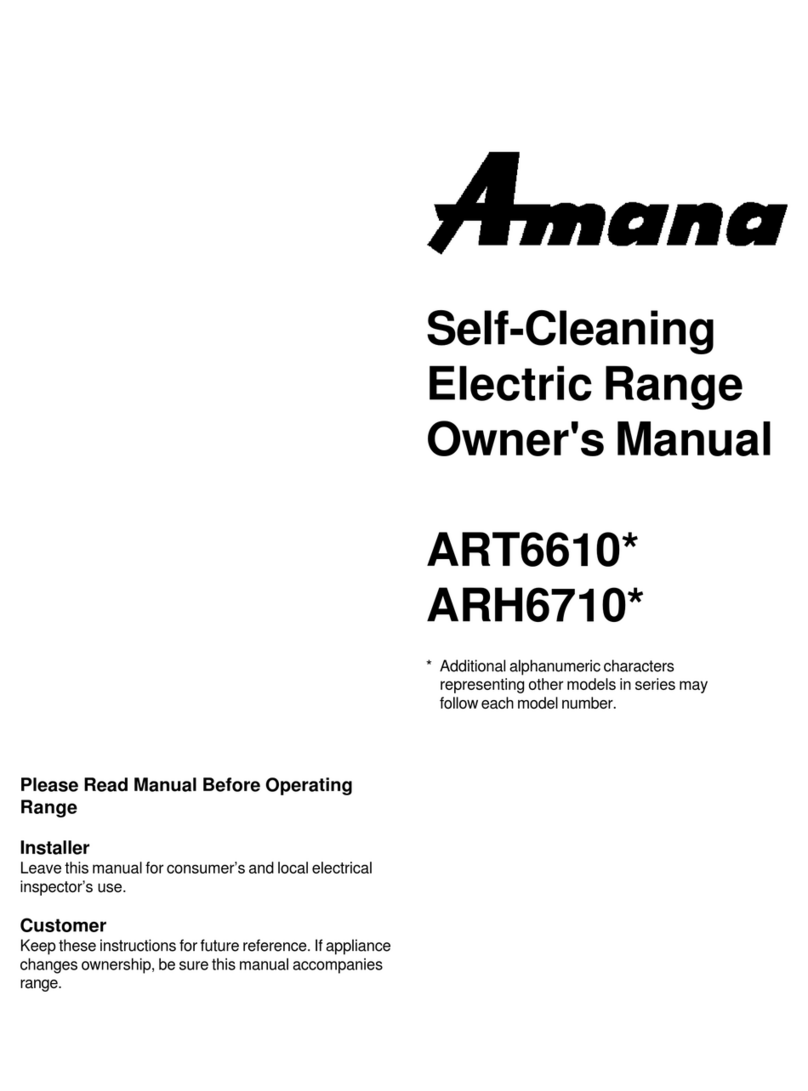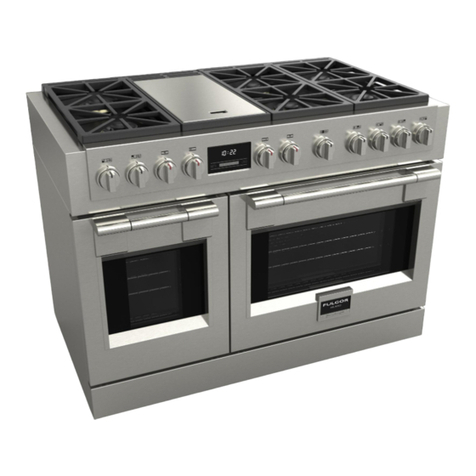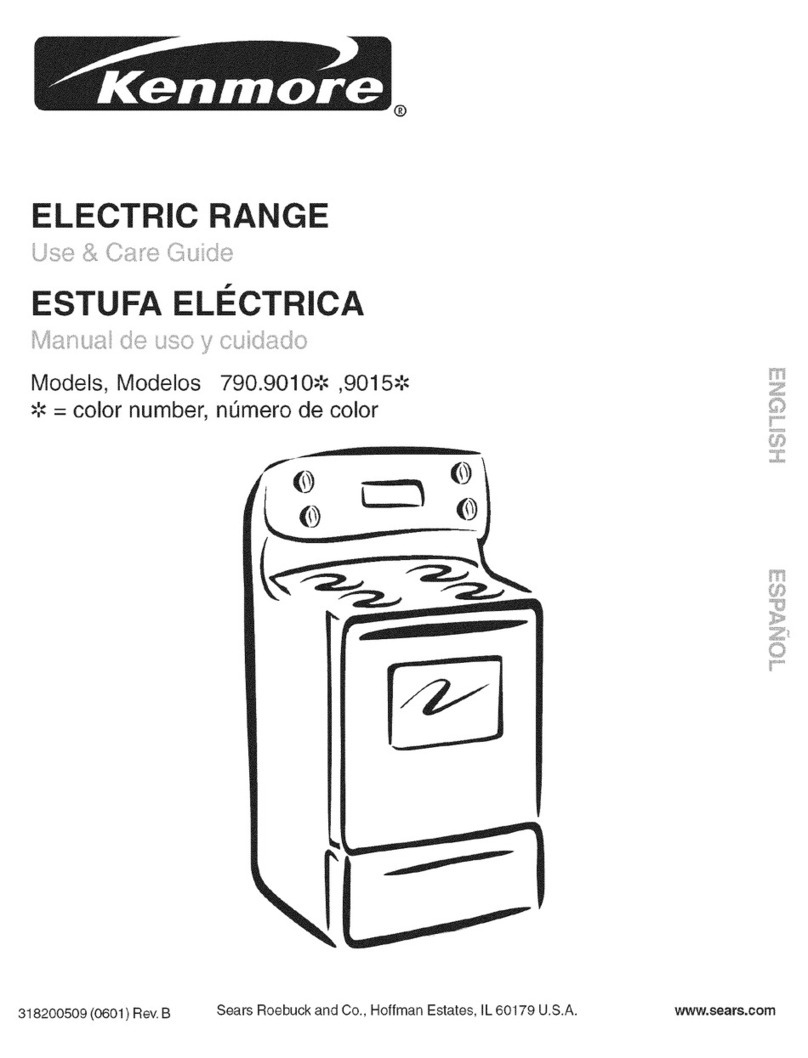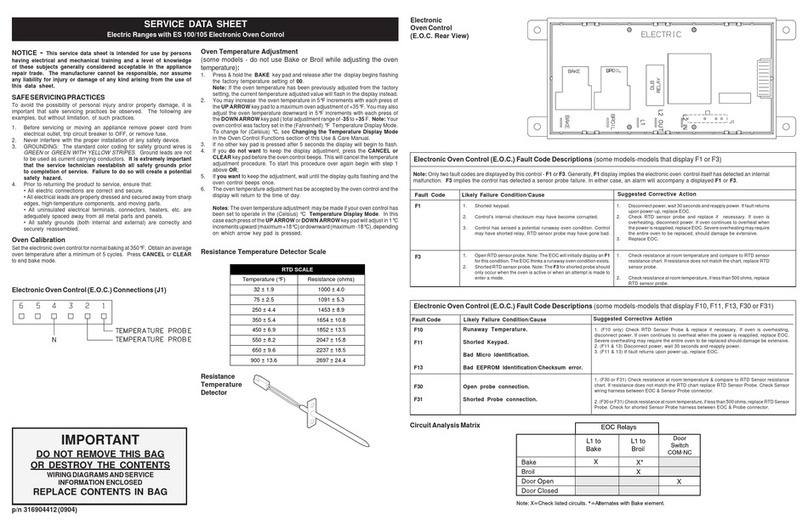Step 7
Exhaust Information
For Outside Vented Models Only
1. Adjustable Exhaust Outlet
Hood exhaust outlet is adjustable to compensate for
duct-work misalignment. In the top (vertical) exhaust
position, it can be adjusted 7/3"Z' to the left or right of
center, and it has a total adjustment of 7/16" from front
to rear of the range, in the rear(horizontal) exhaust posi-
tion, itcan be adjusted 7/3,_' to the leftor right of center,
and it has a total adjustment of 7/16" from top to bot-
tom of the range.
REMOVE 2 SCREWS
FOR FULL
ADJUSTMENT
TO REAR
HINGE
2. Top (Vertical) Hood Exhaust
•Your range is shipped assembled for Top (Vertical)
Hood Exhaust. For installation under aclose fitting
cabinet, the exhaust outlet assembly must be removed
from the top of the blower cover by removing 2 screws
and 2 plates. Insert the exhaust outlet assembly into
the vertical exhaust pipe with the hinge of the damper
toward the wall. Temporarily secure with duct tape or
some other means. After range is in place, reassem-
ble exhaust outlet assembly to the top of the blower
cover with 2 plates and 2 screws.
* Ifthere isspace between the bottom ofthe cabinet
to clear the exhaust outlet assembly, it can remain in
place and be adjusted to fit with the vertical pipe by
loosening 2 screws.
3, Hood Exhaust Conversions (Optional)
Be sure the range is not connected to the power.
Remove the 2 screws and damper assembly from the
top of the hood. Remove the 11 screws and cover from
the hood. Lift the blower assembly out of the hood.
_ DAMPER ASSEMBLY
VENTED
A. Recirculating Hood Conversion
Rotate the blower 90 degrees FORWARD (exhaust
toward front). Reassemble the cover onto blower with
3 screws. Slide the blower-cover back into the hood.
Assemble the remaining 8 screws.
RECIRCU_'_LATING_OVER
Arecirculating filter kit(Pub. No.03-FOK6-01)isrequired
and must be installed intothe front of the hood.
B. Rear Exhaust Conversion
Remove the wires from the 2 slotsand turnthe blower
END to END. Then rotatethe blower exhaust intothe
rear position.The wires can be unplugged for easier
realignment of blower.
j_: ._,,__AMPER ASSEMBLY
COVER
Reposition the wires into the slots (opposite side of
blower).Reassemblecoverontorear ofthe blowerwith
3 screws.Slide blower-coverback intohood. Reassem-
blethe remaining 8 screws. Locateand assemble the
damper assembly onto the rear exhaust of the hood
(cover) as shown.

